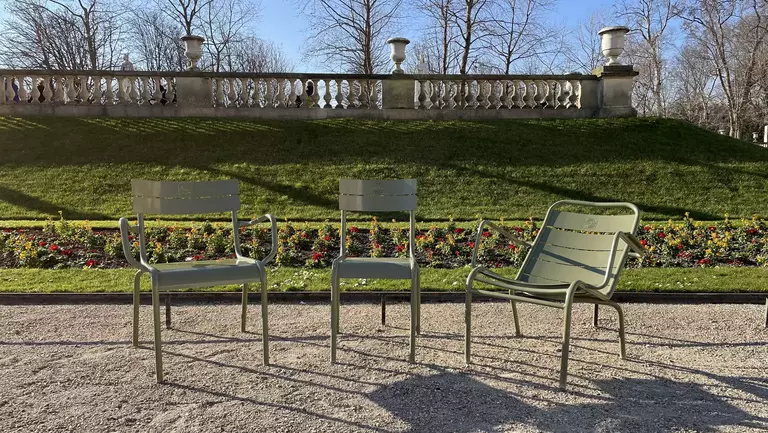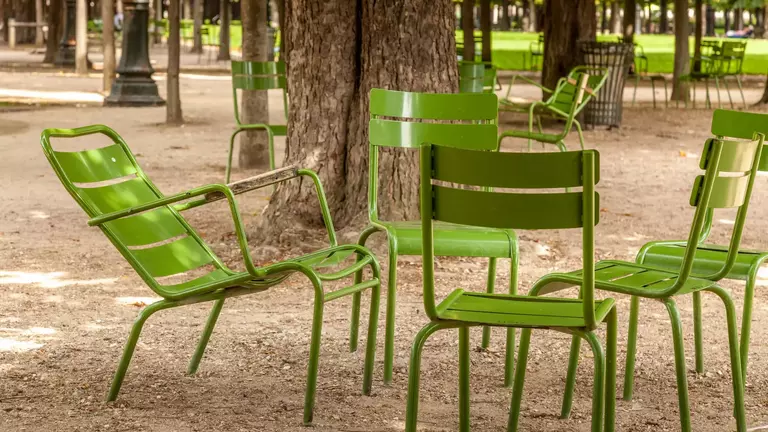The "Sénat" Seats
In its early days in the 18th century, the use of movable seats was subject to a fee and was managed under concession contracts by private companies (more details by clicking here). These companies offered the model of their choice until 1 January 1955, when the Senate imposed the current model on concessionaires to standardise the furniture in the Garden.
In 1974, the Senate decided to make the chairs free and repurchased the stocks from the last concessionaire. Since then, the Senate has continued to carefully maintain this furniture, which is particularly appreciated by users.
The steel seats are relatively heavy (7.3 kg for the chair, 9.6 kg for the armchair, 13.5 kg for the recliner), but this weight has a dual advantage: it serves as a theft deterrent and limits risk of chairs from being carried away in case of a strong gust of wind.

The "Luxembourg" Seats
In 2002, designer Frédéric Sofia created a seat called "Luxembourg," which was much inspired by the Sénat seat.
More ergonomic due to its lighter weight and available in a range of vibrant colours, this new model achieved international success, becoming a symbol of French furniture.
They are available for purchase by the general public, unlike the Sénat seats, which are exclusively reserved for the Garden.
These seats are made of aluminium (3.8 kg for the chair, 4.2 kg for the armchair, 5.9 kg for the recliner).

Did you know?
- While no archives about the design of the Sénat chairs have been found in the national archives, the model is known to have appeared in 1923, the year of its creation by the Ateliers de la Ville de Paris.
- Once a week, the seats are inspected to remove any broken ones and distribute them evenly throughout the garden.
- They are repaired by a social workshop, and the stock is replenished regularly by ordering new seats.
- The green rush of the "Sénat" seats is also used for other furniture, such as the boxes in the Orangerie.
- The "Luxembourg" seats also adorn such Parisian locations like the Tuileries Gardens, Place de la République, or Paris Plage.